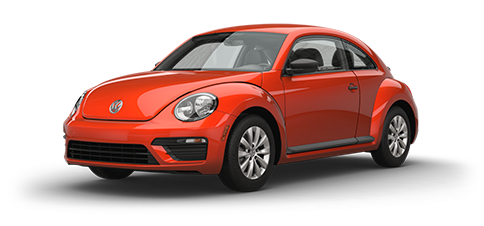Volkswagen Beetle
This article is about the original Volkswagen Beetle. For the 1997–2010 car, see Volkswagen New Beetle. For the car produced from 2011, see Volkswagen Beetle (A5).
The Volkswagen Beetle – officially the Volkswagen Type 1, informally in Germany the Käfer (German, "beetle") and in parts of the English-speaking world the Bug – is a two-door, four-passenger, rear-engine economy car that was manufactured and marketed by German automaker Volkswagen (VW) from 1938 until 2003.[11]
Volkswagen Type 1
VW 1302 (2013-09-15 2307 Spu).JPG
Overview
Manufacturer Volkswagen
Also called "Beetle"[1] / "Super Beetle"[2]
"Bug" / "Superbug"[3]
"Käfer"[4]
"Type 1"
"1302"[5]
Production 1938–2003: 21,529,464 built
(15,444,858 in Germany,
incl. 330,251 Cabriolets)[6]
(≈ 3,350,000 in Brazil)
Assembly Germany: Wolfsburg
Germany: Hanover
Germany: Emden
Germany: Ingolstadt
Germany: Osnabrück
Australia: Melbourne
Belgium: Brussels
Brazil: São Bernardo do Campo
Finland: Heinola[7]
Indonesia: Jakarta
Ireland: Dublin
Malaysia: Shah Alam[8]
Mexico: Puebla
New Zealand: Auckland
Nigeria: Lagos
Philippines: Manila
South Africa: Uitenhage
Venezuela: Valencia[9]
Yugoslavia: Sarajevo
Body and chassis
Class Subcompact, economy car
Body style
2-door saloon
2-door convertible
Layout RR layout
Powertrain
Engine
1100 cc H4
1200 cc H4
1300 cc H4
1500 cc H4
1600 cc H4
Transmission
4-speed manual transaxle
4-speed semi-automatic, Saxomat (from 1961)
3-speed semi-automatic, Autostick (1967–76)
Dimensions
Wheelbase 2,400 mm (94.5 in)
Length 4,079 mm (160.6 in)
Width 1,539 mm (60.6 in)
Curb weight 800–840 kg (1,760–1,850 lb)[10]
Chronology
Successor
Volkswagen Golf Mk1
Volkswagen New Beetle
Volkswagen Gol (Latin America)
The need for this kind of car, and its functional objectives, was formulated by the leader of Nazi Germany, Adolf Hitler, who wanted a cheap, simple car to be mass-produced for his country's new road network. Hitler contracted Ferdinand Porsche in 1934 to design and build it.[12] Porsche and his team took until 1938 to finalise the design. The influence on Porsche's design of other contemporary cars, such as the Tatra V570, and the work of Josef Ganz remains a subject of dispute. The result was one of the first rear-engined cars since the Brass Era. With 21,529,464 produced,[13] the Beetle is the longest-running and most-manufactured car of a single platform ever made.
Although designed in the 1930s, the Beetle was only produced in significant numbers from 1945 on (mass production had been put on hold during the Second World War) when the model was internally designated the Volkswagen Type 1, and marketed simply as the Volkswagen (or "People's Car"). Later models were designated Volkswagen 1200, 1300, 1500, 1302 or 1303, the former three indicating engine displacement, the latter two derived from the type number. The model became widely known in its home country as the Käfer (German for "beetle") and was later marketed as such in Germany,[4] and as the Volkswagen in other countries. For example, in France it was known as the Coccinelle (French for ladybug).[1][2]
The original 25 hp Beetle was designed for a top speed around 100 km/h (62 mph), which would be a viable speed on the Reichsautobahn system. As Autobahn speeds increased in the postwar years, its output was boosted to 36, then 40 hp, the configuration that lasted through 1966 and became the "classic" Volkswagen motor. The Beetle ultimately gave rise to variants, including the Karmann Ghia, Type 2 and external coach builders. The Beetle marked a significant trend, led by Volkswagen, Fiat, and Renault, whereby the rear-engine, rear-wheel-drive layout increased from 2.6 percent of continental Western Europe's car production in 1946 to 26.6 percent in 1956.[14] The 1948 Citroën 2CV and other European models marked a later trend to front-wheel drive in the European small-car market, a trend that would come to dominate that market. In 1974, Volkswagen's own front-wheel drive Golf model succeeded the Beetle. In 1994, Volkswagen unveiled the Concept One, a "retro"-themed concept car with a resemblance to the original Beetle, and in 1998 introduced the "New Beetle", built on the contemporary Golf platform with styling recalling the original Type 1. It remained in production through 2010, being succeeded in 2011 by the more aggressively styled Beetle (A5), which was also more reminiscent of the original Beetle.
In the 1999 Car of the Century competition, to determine the world's most influential car in the 20th century, the Type 1 came fourth, after the Ford Model T, the Mini, and the Citroën DS.[15]
awesome
Nice one.
Hi! I am a robot. I just upvoted you! I found similar content that readers might be interested in:
https://en.wikipedia.org/wiki/Volkswagen_Beetle